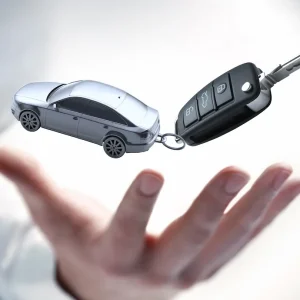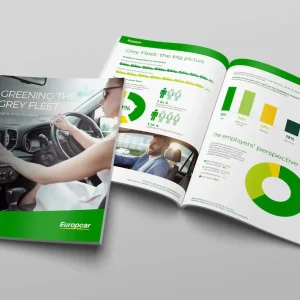2022 has been a momentous year.
The global effects of the pandemic are continuously being felt, and Russia’s invasion of Ukraine has only added to the pressure on supply chains.
In the UK, we have witnessed the passing of one monarch and the ascension of another, as well as a spectacle of three Prime Ministers, four Chancellors, and more policy U-turns than we could count.
It has also been a significant year for fleets and motorists. So, we thought we’d look back on it by picking five key highlights.
1. The perpetual rise of EVs (Electric Vehicles)
Car registrations have been relatively flat throughout 2022.
Partly due to economic uncertainty, the numbers are similar to the depressed levels in 2020 and significantly lower than the record highs of several years ago.
Regardless, EVs are showing astonishing levels of growth.
Whereas both petrol and diesel sales have declined in 2022, registrations of alternatively fuelled vehicles (AFVs) – which are various forms of EVs, according to the Society of Motor Manufacturers and Traders’ statistics- stood at almost 540,000 in the 12 months to November this year, 20% higher than a year previously.
This has impacted the marketplace. Across the past 12 months, 33.7% of cars registered were AFVs, significantly ahead of diesel (5.3%) and within striking distance of petrol (42.8%). Could 2023 be the year when electric driving finally becomes the norm?
2. Another new government and new tax hikes
We’ve had three Prime Ministers in 2022 – all of them Conservative, but each with different legislative ideas. In November, Sunak exposed many of his economic priorities in the Autumn Statement.
This statement was significant for fleets for several reasons, but mostly for how it treated EVs. From 2025, EVs will no longer be exempt from Vehicle Excise Duty. They will have to pay the first-year rate of £10, followed by a standard annual rate of £165. They will also be subject to the additional rate for vehicles worth over £40,000.
EVs also face higher Company Car Tax (CCT) rates from 2025-26, rising to 5% for zero-emission vehicles in 2027-28. The full range of rates are shown in the table above.
It was speculated ahead of the Autumn Statement that future CCT rates for EVs could be significantly higher, perhaps even rising to 10% for zero-emission vehicles, but thankfully, that didn’t materialise.
However, the published rates suggest that the government is no longer prepared to give EVs a free ride. With more fleets and motorists going electric, the Treasury and HMRC are trying to secure tax revenues where they can.
In the coming year, it will be worth looking out for the government taking preliminary steps towards a full realignment of the vehicle taxation system, dependent on taxing motorists’ mileage through road pricing.
3. Could record fuel prices get worse?
Geopolitical shocks have rippled throughout 2022.
This would have been most noticeable for most motorists at the petrol pumps. From the start of the year to the first week of July, the price of a litre of petrol rose by 32% to 192p, while diesel prices rose by 34% to 199p.
The numbers have since come down. Petrol is now closer to 160p a litre, while diesel is closer to 180p. However, these are still historically high. Fuel costs remain a significant burden for businesses and households.
In the Autumn Statement, the Chancellor neither announced freezing the main rate of Fuel Duty in the forthcoming financial year nor did he cancel the 5p rise planned after Sunak temporarily cut the rate by the same amount earlier in 2022 when he was Chancellor. According to the Office for Budget Responsibility (OBR), if these increases happen, “it is expected to raise the price of petrol and diesel by around 12 pence a litre” in Spring next year.
It’s still possible that the Government will decide to freeze Fuel Duty or cancel the additional 5p increase before the new financial year begins. But they haven’t yet, so the OBR’s warning ought to be taken very seriously.
All of this, naturally, will have an impact on the cost gap between ICE (internal combustion engine) vehicles and EVs. A recent analysis from the Leaseplan Car Cost Index 2022 has shown that the monthly purchase and running costs of an EV is now either cheaper or similar to petrol and diesel models. However, as the government continues to remove financial incentives for EV drivers, it’s unknown how long this can be sustained.
4. The outcomes of COP27
There is cause for optimism when it comes to cleaner mobility and electric fleets.
Although there wasn’t a day at COP27 in Egypt devoted to transport, as there had been in Glasgow at COP26 in 2021, several new schemes were launched, including a partnership between the US and UK to help establish EVs in developing countries.
In the run-up to COP27, the number of signatories to the “COP26 declaration on accelerating the transition to 100% zero emission cars and vans” grew significantly. Among the new signatories are France and Spain, who have joined over 200 other countries, regions, and organisations in voicing their eagerness to transition to zero-emission motoring by either 2035 or 2040.
5. The growth of the ULEZ and CAZs
In November, the Mayor of London made an announcement. From August 2023, the capital’s Ultra-Low Emission Zone (ULEZ) will expand from its current parameters to cover all Greater London.
London’s ULEZ is part of a wider national movement. This year has also seen the introduction of new Clean Air Zones (CAZ), where special action is taken to reduce air pollution across the country. These include a CAZ in Bradford and Bristol.
However, the most intriguing development was the implementation of a Zero Emission Zone in Oxford. All petrol and diesel vehicles travelling through the city centre will be charged, with only zero-emission vehicles spared. With EVs becoming increasingly widespread, it’s possible that Oxford’s approach will become the norm elsewhere.
Looking ahead to next year
Following a tumultuous 12 months for fleets and motorists, one would hope for things to return to some level of normality in 2023. However, with the war in Ukraine showing no signs of stopping, and the question of road pricing now becoming too big for any government to ignore, this may prove fanciful.
Yet the automotive sector continues to provide us with hope for the future as it proves itself as agile and resourceful in the face of the climate change emergency. With 86% of business fleets across Europe now suitable for the switch to electric according to data from Geotab, we can expect to see great progress being made in zero emission driving. This, it is hoped, will spur other industries into action.
Neill Emmett is head of marketing at Leaseplan UK





